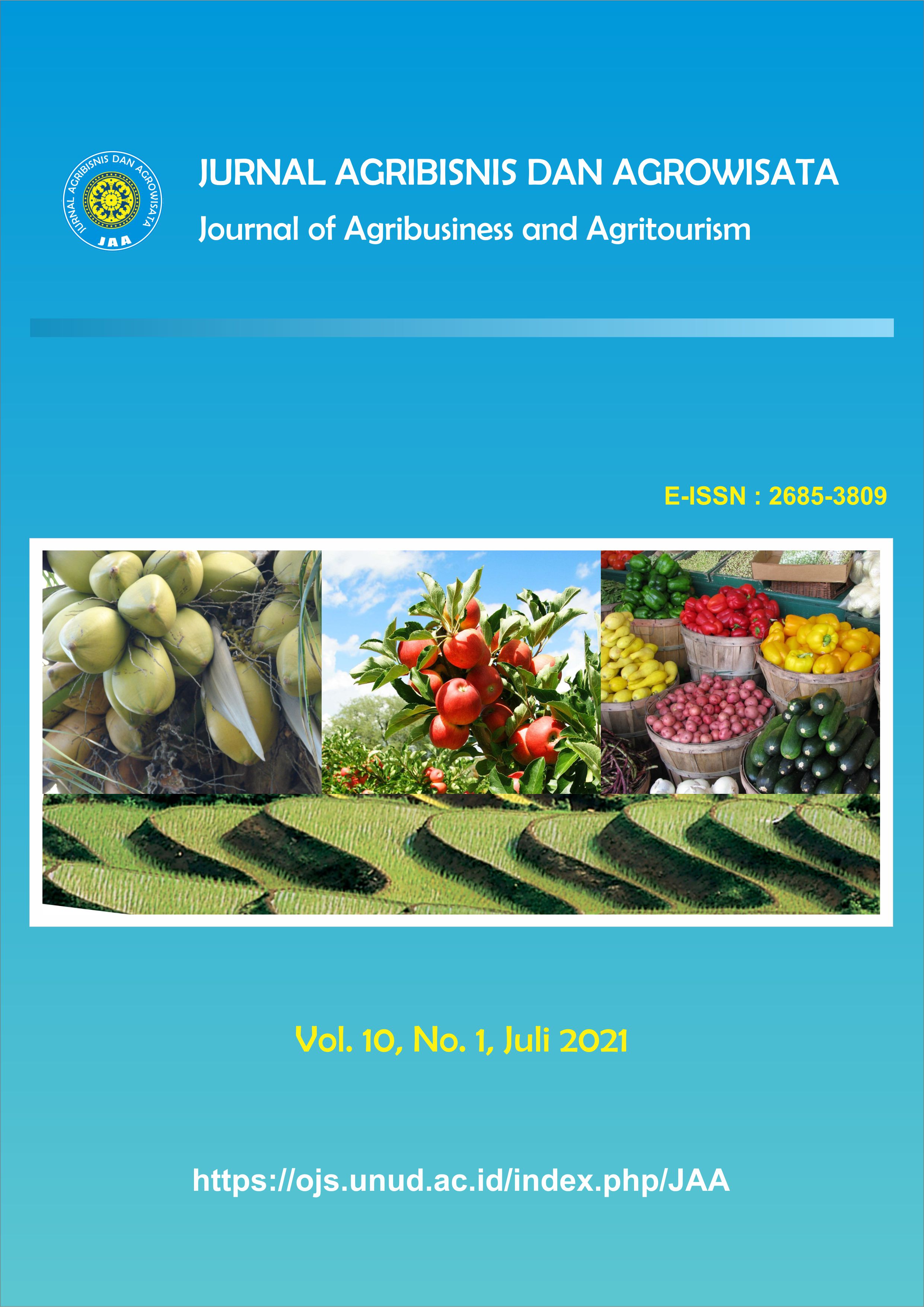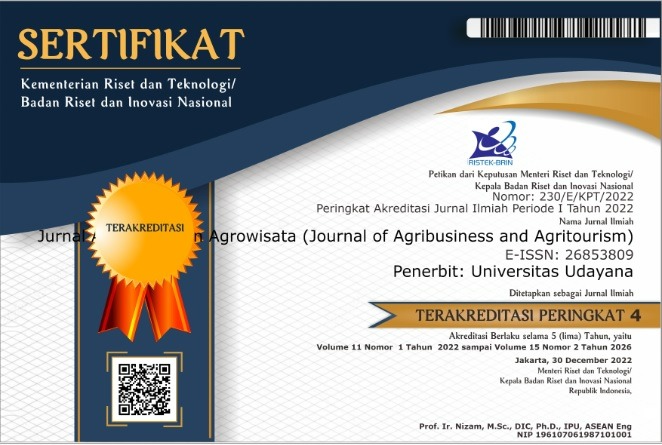Analisis Usahatani Monokultur Padi dan Tumpang Sari Tembakau Cabai (Studi Kasus di Subak Gede Sukawati, Kabupaten Gianyar)
Abstract
Analysis Of Rice Monopulture And Tumpang Sari Chilli Tobacco
Farming is an activity that seeks land, labor, and capital to provide maximum benefits and income. This is applied by Irrigation System of Subak Gede Sukawati, namely the farming of rice fields by planting in rotation by planting rice monocultures and intercropping of tobacco-chilies because they are suitable with their natural conditions, so that the irrigation water distribution system is evenly distributed. The purpose of this study is to determine the income of rice monoculture farming and tobacco-chili intercropping, to see which farming's R/c ratio is more profitable, and the constraints faced by farmers in Subak Gede Sukawati. The technique of determining the sampling is proportional random sampling with 60 respondents. The analysis technique used is quantitative and qualitative analysis. The results of this study concluded that the income of rice monoculture farming farmers was IDR 13,377,272 per hectare per year, while the income of tobacco-chili intercropping farmers was IDR 115,318,875 per hectare per year. Seen from the R/C ratio of rice monoculture farming at 1.50 and intercropping chili tobacco at 4.47, which means that they are equally profitable because the R/C ratio > 1. The constraints faced by farmers are technically weather, pests and diseases, while non-technical are land conditions and difficult accessibility to land, marketing, and labor.
Downloads
References
Barokah, U., Rahayu, W., & Sundari, T. (2014). Analisis Biaya Dan Pendapatan Usahatani Padi Di Kabupaten Karanganyar. Agric, 26(1), 12–19.
Norken, I. N., Suputra, I. K., & Arsana, I. G. N. K. (2015). Water Resources Management Of Subak Irrigation System In Bali. Applied Mechanics And Materials. Https://Doi.Org/10.4028/Www.Scientific.Net/Amm.776.139
Salahudin, S. (2018). Analisis Komparatif Usahatani Monokultur Tembakau Rakyat Dan Tumpangsari Tembakau Rakyat Dengan Cabai Di Kecamatan Pringgabaya Kabupaten Lombok Timur. Agroteksos: Agronomi Teknologi Dan Sosial Ekonomi Pertanian. Https://Doi.Org/10.29303/Agroteksos.V28i3.28
Shinta, A. (2011). Ilmu Usahatani. Malang: Universitas Brawijawa Press (Ub Press).
Siregar, S. (2017). Metode Penelitian Kuantitatif (4th Ed.). Jakarta: Pt. Fajar Interpratama Mandiri.
Soekartawi, A. (2010). Analisis Usahatani. Jakarta.
Sugiyono. (2017). Metode Penelitian Bisnis (3rd Ed.). Bandung: Alfabeta.
Suratiyah, K. (2015). Ilmu Usahatani. (S. R. Annisa, Ed.). Jakarta: Penebar Swadaya.
Wahyuni, A., Alamsyah, Z., & Damayanti, Y. (2018). Analisis Komparasi Pendapatan Usahatani Kelapa Dalam Pola Monokultur Dan Tumpang Sari Di Kecamatan Mendahara Kabupaten Tanjung Jabung Timur. Jurnal Ilmiah Sosio-Ekonomika Bisnis. Https://Doi.Org/10.22437/Jiseb.V21i1.5094







